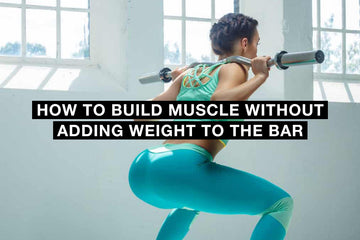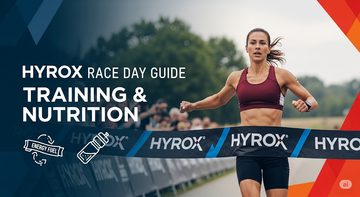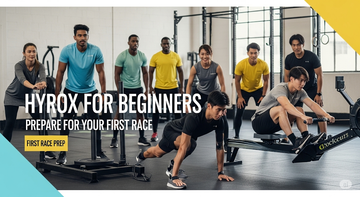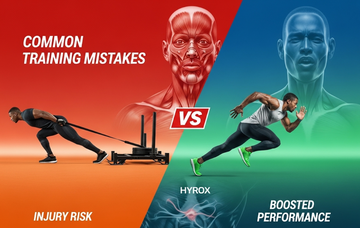As a novice lifter, you were probably told that in order to gain strength, build muscle, and get results from lifting weights, you had to continually add weight to the bar.
And, while it’s true that over the long term you should strive to increase the amount of weight your lifting on a given exercise, the reality is that once you exit the novice phase of your training career and enter the intermediate-to-advanced stages, you simply can’t keep adding weight to the bar every workout.
If you could, we’d all be benching 600+ pounds and squatting well over 1000 pounds.
The reality is that you can still build muscle without adding weight to the bar every workout.
As we just mentioned, over the months and years of training, you should be able to gradually increase the weight you’re lifting, but in the short-term (week to week training), there are several other ways you can implement progressive overload, thereby building muscle without adding weight to the bar.
Let’s discuss this.
7 Ways to Build Muscle Without Adding Weight to the Bar

#1 Adding Reps
“Traditional” hypertrophy training axioms held that you needed to train in the 8-12 rep range to build muscle.
In recent years though, research has shown that hypertrophy (muscle building) can happen across a much wider spectrum, from as low as 5-6 reps per set to as high as 30-35 reps per set.
The key thing in driving muscle growth is that the muscle is sufficiently stressed. Lower rep ranges accomplish this by overloading muscle fibers with a lot of tension (weight on the bar). To accomplish the same thing with lighter weights, you have to push close to failure.
What this means is that if you cannot add weight to the bar on a given lift (for whatever reason), try increasing the number of repetitions that you can perform before reaching failure.
#2 Increase Range of Motion
Progressive overload is all about forcing your muscles to do more work than they have previously done.
In physics, the formula for work is force multiplied by distance.
Translated to your workout, this means that if you move the same weight (force) over a greater distance compared to your last session, you’ve performed more work, which builds muscle.
Increasing range of motion can be accomplished in a number of ways in your training.
For instance, you can elevate your hands on a couple of thick textbooks or push up handles, creating a deficit, which allows you to move your body through a greater range of motion, thereby forcing the chest, shoulder, and triceps to do more work.
Another example is performing deficit reverse lunges where you begin on an exercise step (or any low-elevation platform) and lunge backward. The added elevation allows for greater hip flexion which puts your quads and glutes on greater stretch compared to performing the exercise standing on the ground.
Still another way to increase the range of motion is to perform 1.5 reps where you lower the weight all the way to the bottom, raise it halfway up, lower it all the way to the bottom again, and then return to the top.
The 1.5 rep technique can be used with just about any exercise and it’s also a phenomenal way to increase the challenge of bodyweight exercises if you don’t have access to a gym!
#3 Increase Training Density
Training density refers to the amount of work completed in a given amount of time.
If you can complete more reps in the same amount of time, or you’re able to complete the same amount of reps in less time than your previous workout, your training density will be greater than your previous workout, which means you’ve done more work and will build muscle.
One of our favorite ways to do this is by using block training.
Pick an exercise, a rep goal (usually 35-50 reps, depending on the exercise), and set a timer for 3 or 4 minutes.
Start the timer and begin performing clean, controlled reps. When you approach failure, rack the weight, rest briefly (15-30 seconds) and then keep repping. Use this rest-pause technique to perform as many quality reps as possible within the time period.
When the timer buzzes, write down how many reps you completed, and aim to complete more reps the next workout. When you reach your rep goal, add a small amount of weight to the lift, and repeat.
#4 Increase Time Under Tension
Typically, lifters perform a 1-second eccentric and a 1-second concentric when performing an exercise.
Another way to force your muscles to do more work, without having to add weight to the bar, is to increase the time under tension by extending the eccentric portion of the lift.
So, instead of lowering the weight over a count of one, take between 3-5 seconds to lower the weight.
This also has the added benefit of eliminating momentum and reducing stress on the joints, ligaments, and connective tissue since you have to exert greater control over the weights.
#5 Try Isometrics
Isometric is a static contraction where you hold a specific position.
The most commonly used isometric exercise in fitness circles is arguably the wall sit, which lights a fire in your quads and generates tons of metabolic stress -- one of the drivers of muscle growth.
But, there are other ways that you can implement isometrics into your resistance training workouts.
For instance, you could simply add a 1-2 second pause at any point during a lift, such as holding the bar an inch above your chest during the bench press or pausing in the “hole” of a squat.
Isometrics force your muscles to work harder by eliminating the stretch reflex, and they also help forge a stronger mind-muscle connection.
#6 Do Compound Sets
Most of you reading this are likely familiar with the concept of supersets whereby you perform two exercises back to back with little to no rest in between. Traditionally, supersets pair opposing muscle groups (chest and back, biceps and triceps, quads and hamstrings).
But, supersets can also be done for the same muscle group, and these supersets are usually called compound sets.
Since compound sets pair two exercises that attack the same muscle group, you’re increasing the overall amount of work they are doing before resting without adding weight to the bar.
Common examples of compound sets are:
- Bench press + push-ups
- Bench press + dumbbell or cable flys
- Pull-ups + straight-arm pulldowns
- Pull-ups + inverted rows
- Dumbbell curls + hammer curls
- Close Grip Bench + dips
- Overhead press + side laterals
- Leg Press + walking lunge
- Squats + leg extension
The list goes on and on, but you get the gist. Pair two exercises that hit the same body parts and perform them back to back with no rest. You’ll get an incredible training effect, amazing pumps, and a good cardio workout to boot!
#7 Vary Exercise Order
Yet another way to build muscle without adding weight to the bar is to vary exercise order in your workouts.
Doing so presents your muscles with a novel stimulus that they will have to adapt to, which can spark new growth.
For example, if you always start your upper body workouts with bench press and then move onto rows, try leading off with rows and then going to bench press.
#x Nutrition Matters
When you are training hard but having too little muscle development, time to dial your diet. You can consider to add more calories in your diet to grow the overall mass or maybe add more protein consumption to ensure at least 30g of quality protein per meal. At Ultimate Sup, we carry a wide range of protein supplements that are carefully tested by us using our own bodies to ensure the best quality, the best taste of all our products.
You can take a look at some of the protein products we are selling here. Besides, protein bar is also a good alternative when you don't have access to your meal immediately. You can check them out here.
⭐ Other training, nutrition and supplement knowledge:
- MOST DIETS FAIL BECAUSE OF THIS
- 4 FOODS TO HELP WITH DIGESTION
- 3 WAYS TO SELECT THE RIGHT CHEAT MEAL
- BEST WAYS TO ARCHIVE KILLER ABS
- 5 TIPS TO OPTIMIZE IMMUNE FUNCTION
- MAKE FAT LOSS HAPPEN FASTER WITH THESE FOODS
- 3 WAYS TO BUILD MUSCLE *WITHOUT* GETTING FAT!
- 3 SIGNS YOU’RE SUCCESSFULLY LOSING FAT!
Let us know in the comment how you think and if you have any questions about this topic, feel free to ask. Besides, we will also gladly help you to learn more about protein powder, pre-workout, or other supplements you would like to find/use in Singapore.
Follow us on Facebook and Instagram to get more training advises and exercises.










